Characteristics and types of Uzbek dishes

The traditional flavor, which the national Uzbek dishes can boast, fascinates many people. It stands out for its pleasant appearance, and just as importantly, the centuries-old experience of artisans is behind these products. The methods of production that have been worked out over the centuries are still used, and therefore the products of potters in Uzbekistan deserve maximum attention.
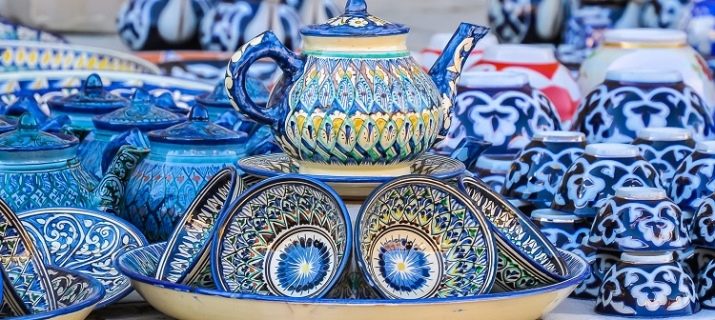
Features and history
The Uzbek approach to making tableware involves the use of both simple fired clay and ceramics. In the process of working on products, hand-painted "Buttermilk" is used. The classic oriental style invariably looks harmonious both in itself and as part of the interior. The sophistication of the Uzbek approach allows you to provide comfort and a warm atmosphere. Craftsmen know how to achieve a clear separation of motives.
Ceramic products and porcelain in Uzbekistan began to be made even during the existence of the Great Silk Road. Earlier, their production began in the city of Rishtan. The classic ornament at that time was "Buttermilk" - this was the name for the pattern of cotton flowers. Initially, in and around Rishtan, all ceramics were made strictly by hand. This continued until the twentieth century. It was only in the 1920s that factories began to be created instead of workshops.
The old handicraft workshops themselves were gradually closed. Potters who worked in them earlier either left their craft altogether, or moved as employees to large enterprises. There are now 2 main factories operating here - Asia Pines Ceramic and Simax F + Z.

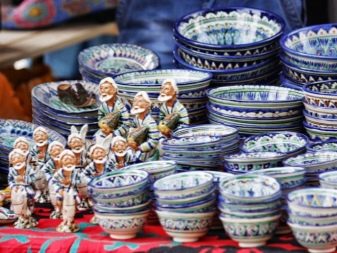
But the porcelain factory in Tashkent, which supplied vast territories with dishes several decades ago, is now not operating.Previously, they made dishes marked at the bottom with the "Anko" bird. Now products of the same type are produced in:
- other cities of Uzbekistan;
- PRC;
- Turkey.
The painting, which is used in the Uzbek ceramic industry, outwardly resembles modern Gzhel. And this is quite a natural similarity. The stylistic features were taken up by masters from the old Russian regions. Only specific images were picked up more familiar to our buyer.
High-quality ceramic products will really delight people, and they are often used to decorate the table before the arrival of guests of honor.
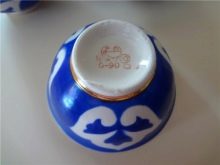

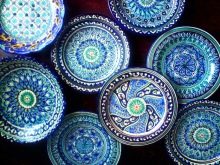
Main varieties
To serve pilaf, sets of plates for 4, 5 or 6 people are most often used. In addition, the same sets usually add the main dish with a diameter of up to 0.5 m. There are also tea sets, which include ceramic teapots and cups, where you will need to pour tea. Large flat dishes called lyagan deserve a separate discussion. They are placed in the middle of the table.
The diameter of lagans varies from 0.1 to 0.3 m. They can take many different forms:
- square;
- circle;
- oval.

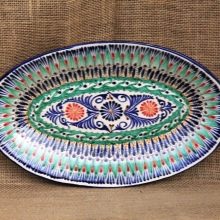
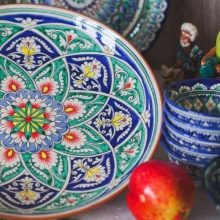
The oldest types of tableware in Uzbekistan appeared in Khorezm. Until now, ceramics are made there strictly according to the old rules. Only classic motives and natural technologies are used. There is no need to fear that somewhere you will come across modern, made at a chemical plant, paint or synthetic varnish. The painting of Khorezm dishes involves the application of stylized petals.
A dagger is placed in the middle of any of them. Its presence in the drawing is not accidental - it is an ancient symbol, which is attributed in mythology to the ability to protect the owners of dishes. At the same time, protection is assumed not only from personal enemies, but also from all kinds of troubles that are not associated with specific people.
A similar motive is rooted in hoary antiquity. You can even find it on ceramics made over 2000 years ago.
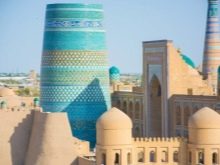
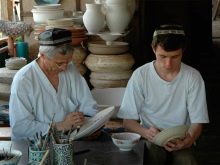
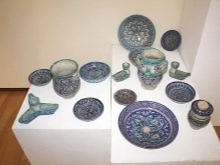
Khorezm ornaments are well recognizable, and local craftsmen diligently avoid any innovations unless absolutely necessary. That is why they manage to keep the extraordinary colorful flavor unchanged. Another great type of antique kitchen utensil is the Rishtan. The ceramics made in this city are known by connoisseurs all over the world. It stands out not only for its unusual patterns, but also for the rare emerald color.
All raw materials for production are taken directly from the outskirts of the city. Here they make both clay blanks and paints that are applied to the finished product. Of course, the drawings are not chosen just like that. Any of the souvenir products made in Rishtan has a strictly defined meaning. It can be deciphered, knowing exactly the cultural code of the Uzbek people. Rishtan craftsmen believe they have access to the best clay in the world.
There is even an opinion that it does not require preliminary processing. Dyes are obtained from herbs that grow near the city. The recipe for the coloring mixture was selected in ancient times. Until now, Rishtan-style ceramics completely follow these proportions.
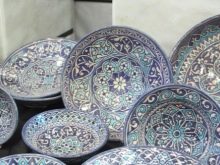
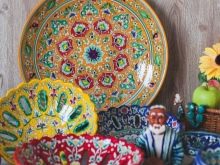

But at the same time, there is no stereotype in the design of products. Any master has his own local production secrets. Due to this, almost every product is unique, and the hand of the manufacturer is confidently recognized by all connoisseurs. Some sets of dishes and tea sets are made in the author's style. The bottom line is that their creators completely abandon any canons, reproducing only general national motives.
Uzbek life cannot be imagined without small and large bowls. Hemispherical cups without handles are found in every home. Very often there are also miniature bowls used for cognac and vodka. At the same time, bans on the part of the clergy are ignored - nevertheless, the 21st century cannot but affect.Containers larger than bowls - scythe or kasa (depending on the pronunciation) - are needed for soup, sauce, and other liquid or semi-liquid dishes. Braids are made of various sizes. But lagans are most often used. They are needed for solid and crumbly food. Liquid foods are not put into these dishes.
Important: you should not call lyagan a "plate" - any Uzbek or a real connoisseur will be offended by hearing such an illiterate name.
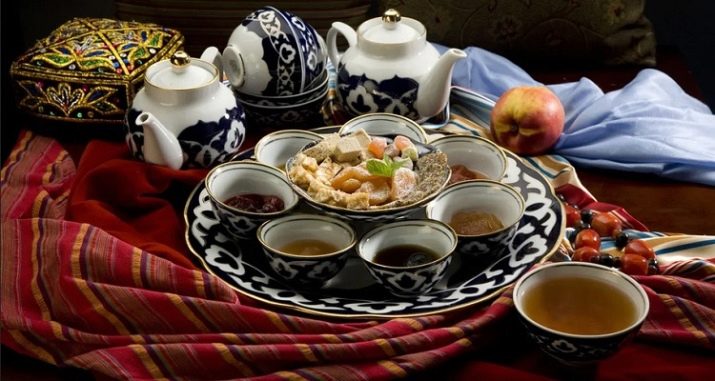
There are a number of dishes that look like lyagan, but differ in name. This name always includes the word "tovok" in one form or another. It just literally means "bowl" or "dish".
- Nim-tovok - translated as "partially open container". Outwardly, it looks like a large bowl with relatively modest sides.
- Tovoki Labgardon - it is customary to translate as "a dish with curved edges." Indeed, it is slightly twisted around the perimeter.
- Porum-tovok - flat dishes intended for bread and pastry.
- Andijan tradition orders to use palovok. As you might guess, it is needed for eating pilaf. A feature of such a vessel is its placement on a leg. Oil flows down the high walls to the bottom of the bowl. Therefore, you can enjoy the pristine taste of aromatic pilaf. Important: in Tashkent, unlike Andijan and Fergana, pallets are not used. Probably, it's all about the different fat content of the dishes themselves.
- Even in Andijan and in the Fergana Valley in general, dam-tovoks are often used... This is a dish that also has the function of a lid. Basically, it is needed not for serving food on the table, but for laying out individual ingredients. Going into the Uzbek cuisine, you can often see how the cook puts boiled meat pieces into dam-tovok.
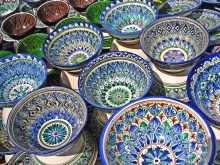
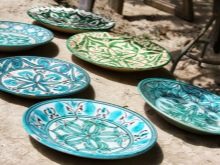
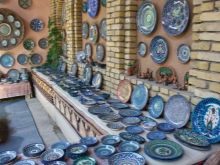
Khorezm surprises tourists and connoisseurs of exoticism with another type of ceramic tableware - badia (in another pronunciation, bodiya). Badia differs from lagan in greater depth and height of the side. The outer wall can be positioned straight or at an angle of 85 degrees. But there are also intermediate options - with a relatively smoothed bevel. Since bodia is always placed on a high leg, some experts assume that it has become a side development of dam-tovoks.
An even larger dish is called togora - literally "bowl" or "basin". Togora is made not only from ceramics, but sometimes also from metal. However, this is not some specific type of dishes, but rather a collective name for large deep vessels. Therefore, when buying online or ordering from a catalog, it is important to clearly specify what exactly is meant. Metal togors, unlike ceramic ones, have no particular decorative value.
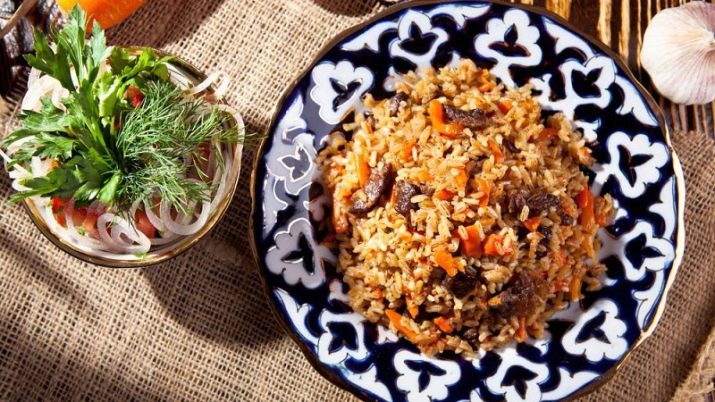
It is interesting
In addition to the general classification of Uzbek dishes, it is important to know other nuances. In Rishtan, handicraftsmen-potters occasionally put reed down or a bird's feather into the clay. The voids formed during the subsequent firing make the finished containers lighter and provide a semblance of a thermos effect. To obtain ishkor glaze:
- collect the plant of the same name;
- burn it;
- ash is burned at a temperature of over 1200 degrees so that crystals appear;
- grind crystalline ash;
- mix it with quartz sand;
- a small amount of flour and crushed white pebbles are added.
Important: Tin is used in very small quantities, as it can be toxic.
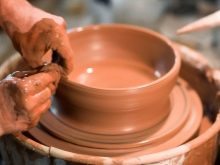
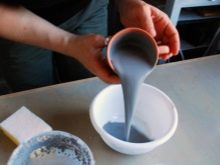
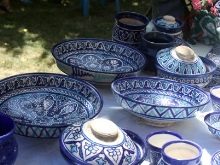
Regardless of the intricacies of the recipe and technological nuances, the true "Rishtan" has small cracks. According to them, the original product is accurately recognized; fakes are invariably devoid of the slightest flaw.
The main enterprise in Uzbekistan for the production of tableware is the Pakhta firm. She does:
- milkmen;
- teapot hats with stands;
- vases;
- fruit makers;
- sets for spices;
- toothpicks;
- pepperpots;
- salt shakers;
- bowls;
- sauceboats and salad bowls;
- triangular, rectangular, oval plates.
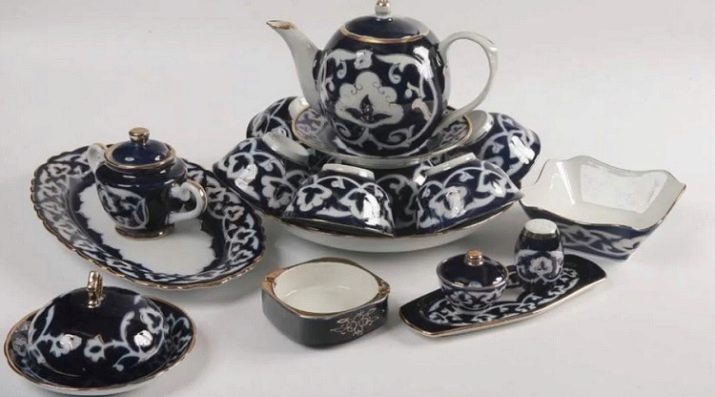
In total, there are over 80 varieties of such dishes... “Rishtan ceramics” is not lagging behind either. The products of this company are distinguished by their brightness and beauty. She really embodies the ideal of traditional Uzbek dishes. Painting is always carried out in the same type, which allows you to pick up sets from individual components without any problems.
In the next video, you will find the pros and cons of Uzbek cauldrons, knives and utensils.








